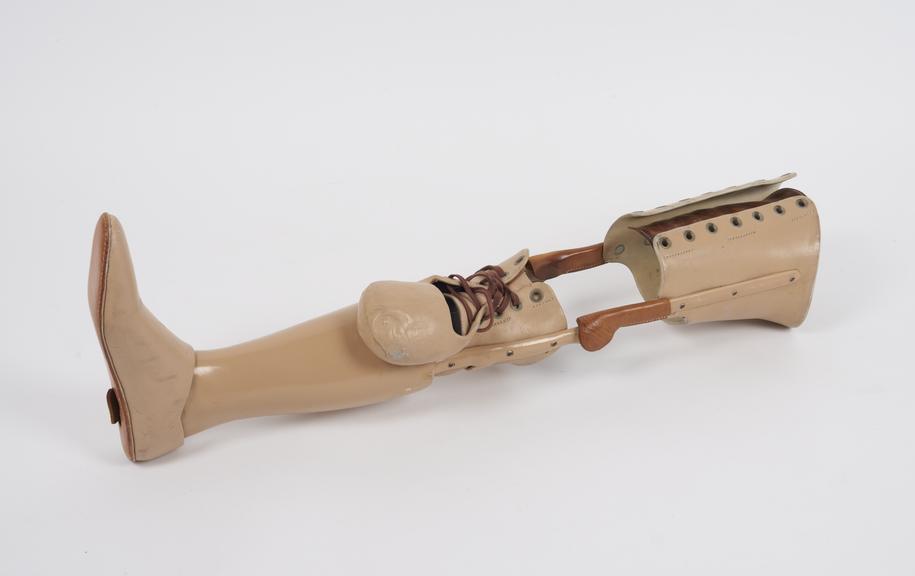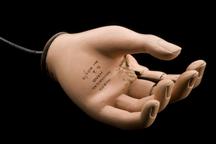

Artificial/prosthetic leg, made for a 14 year old boy
- Made:
- 1976

Articulated artificial/prosthetic leg, made for a 14 year old boy living with thalidomide impairments, by Blatchfords for the NHS and fitted at the Medway Clinic in Kent, 1976
Just as each person’s experience of living with thalidomide impairments is different, so is their experience with prosthetic or artificial limbs. This might be due to the attitudes of their families and medical professionals they met. Fittings often did not take into account what children could do with the limbs they had.
It is unknown who these limbs were made for. The legs were attached to the child’s hips using the padded straps. The leather sockets are open-ended to allow the child’s shortened legs to hang free. They would have been made to fit the child, based on a series of plaster casts taken from their body. This part of the process was very uncomfortable for most and could involve them being suspended in the air whilst the plaster dried. The flat soles were designed to help with balance but would have been very difficult to walk in. Bulky, heavy, painful to wear and hard to use, many felt they had less independence whilst wearing the prosthetic limbs than learning to adapt without them. Few have continued to use prosthetic limbs into adulthood.
Prosthetic or artificial limbs were in part meant to act as reparations for the impairments that thalidomide had caused. They were frequently used as a way of visually “normalising” the bodies of people living with thalidomide impairments. Many question who these supposed improvements were really meant to help. Some children underwent operations to make the prosthetic limbs fit better which could include amputations. Children had little input into these decisions and the trauma of some of these medical interventions is still felt today, both emotionally and physically.
Thalidomide was a compound found in drugs prescribed to people in the late 1950s and early 1960s. Although today it is associated primarily as a treatment for pregnancy related nausea, it was also prescribed to anyone experiencing symptoms of colds, flu, headaches, anxiety, and insomnia. Thalidomide causes nerve damage in the hands and feet of adults, but when taken in early pregnancy it causes impairments such as limb difference, sight loss, hearing loss, facial paralysis, and impact to internal organs. One tablet is enough to cause significant impairments. Researchers later identified that there was a link between the impairment a person is living with, and which day of the pregnancy thalidomide was taken. UK distributors withdrew the drug in 1961 and a government warning was issued in May 1962.
Details
- Category:
- Orthopaedics
- Object Number:
- 2019-26
- Measurements:
-
overall: 830 mm x 200 mm x 200 mm,
- type:
- prosthetic leg, artificial leg and thalidomide
- copyright:
- Chas A Blatchford and Sons Limited




